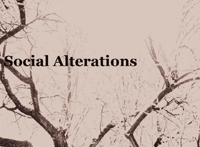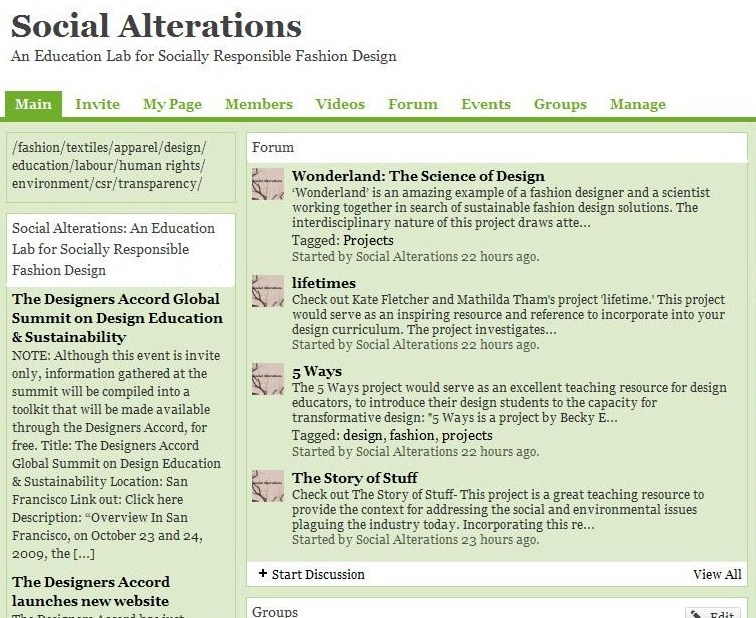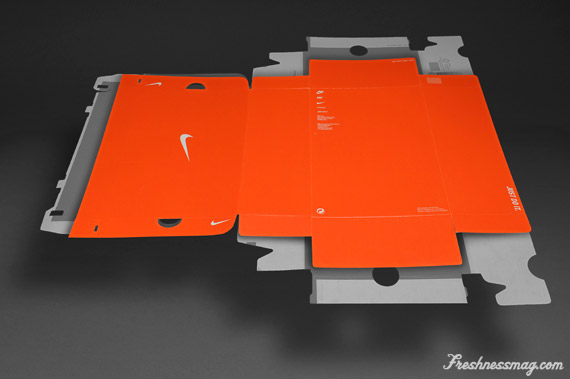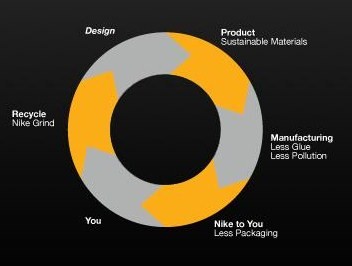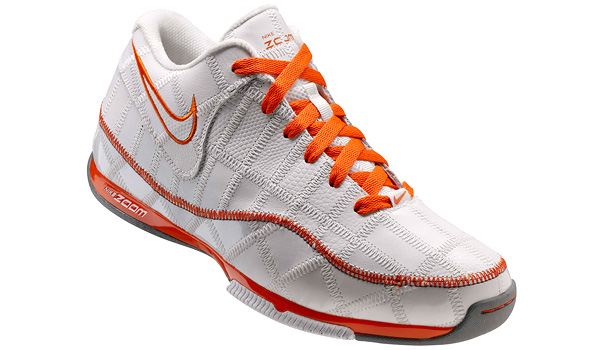
The 3rd installment of FIBERcast went live on July 31, 2009. This episodes theme? Environmental Sustainability in the Apparel Industry. Thought I might offer some notes that stood out from the 1st half of the broadcast.
Moderator: Marsha Dickson, Professor and Chairperson of the Department of Fashion and Apparel Studies, University of Delaware
Guest Speakers: Will Phillips, Manager, Environmental Strategy, Under Armour Inc., Rick Horwitch, Vice President, Solutions Business Development and Marketing, for Bureau Veritas – Consumer Products Services, Dr. Suzanne Loker, Professor, Cornell University, Huantian Cao, Associate Professor, University of Delaware
The talk started off with Professor Huantian Cao breaking down the UDSAI Policy Guide (which mainly focuses on the environment).
Dr. Suzanne Loker defined sustainability broadly as “economic development, the environment, the impacts of people in their consumption choices, and technological advancement.” This signifies “improving, building upon and overall achieving responsible practices that are mentioned over the long term. Sustainability is at the foundation of social and environmental responsibility, yet it may not be achievable. Rather, we should strive for improvement” (Loker).
Loker cites a quote taken from Yvon Chouinard, the Founder and Chairman of Patagonia, as stated in the Preface of the book Sustainable Fashion: Why Now?
“To be sustainable means that you would take-out of a system the same amount of energy as put in, with no pollution or waste. A sustainable process is one you can do forever without exhausting resources or fouling the environment […] There has never yet been, nor is there now a sustainable business or sustainable fashion on this planet, and no one should ever pretend in setting out for a place that you’ve actually gotten there.”
Sustainability is a continuous goal, one that can never be achieved. Rather, it is something to strive towards. In this way, it needs to be larger than individual businesses.
Huantian Cao covered 3 equally important pillars of sustainability:
- Economic
- Environmental
- Social
Speaking in detail on what companies can do today to get started on their environmental sustainability in terms of scope of business activities, both Loker and Rick Horwitch, Vice President, Solutions Business Development and Marketing, for Bureau Veritas – Consumer Products Services stressed their belief that every member of the supply chain has a contributing role in decreasing the environmental impact through input and matching production to consumption.
To get started immediately, Horwitch suggests companies tackle the issues through design, production, supply chain, and corporate perspective:
Design perspective
- AFA: Restrictive Substance List (RSL) (all globally encompassing it covers the apparel and textile and footwear industry) get rid of the bad substances in your products.
- Packaging: reduce ratios. Look for biodegradable content, energy efficient.
Production
Supply chain
- Look at transportation
- Look at social compliance. Social compliance is critical. Ethical sourcing is critical to a sustainable supply chain.
Corporate perspective
- Be a good citizen.
- Communicate that the issues are important to you.
- Do large scale changes, but do not ignore the small changes, such as changing the light bulbs.
What is the business case to engage in this shift?
Horwitch maintains that while the front end may be more expensive, “sustainability is about the triple bottom line and a for profit solution. Sustainable process is an efficient process.”
Triple bottom line? Remember those three pillars Huantian Cao mentioned:
- Economic
- Environmental
- Social
For more information, you can listen in on this FIBERcast, as well as previous broadcasts, here.
Resources to walk away with:
University of Delaware’s Sustainable Apparel Initiative
Sustainable Fashion: Why Now?
Restricted Substance List (RSL)
Patagonia: The Footprint Chronicles
FIBERcast
Source: FIBERcast


